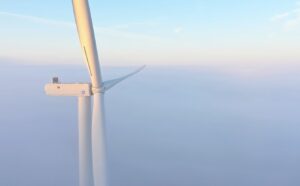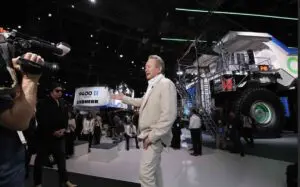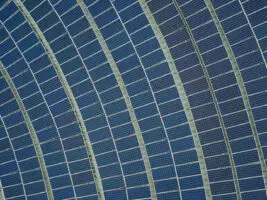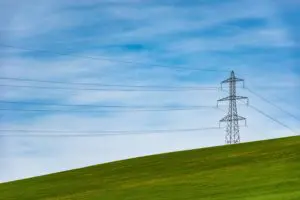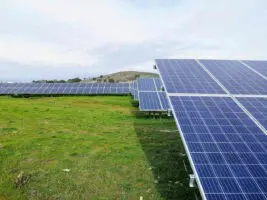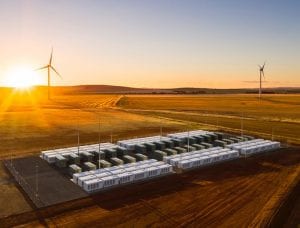Dramatic new details have been released on the future of Sun Cable, the world’s biggest renewable energy and storage project, with 12 gigawatts (GW) of wind capacity to be added to the massive arrays of solar panels and giant batteries planned for the Northern Territory.
The new details were unveiled this week by Quinbrook Infrastructure Partners, the Australian-founded global investor that was brought in by Sun Cable’s principal backer, software billionaire Mike Cannon-Brookes, to look at the near term domestic opportunities for the project.
Quinbrook quickly identified that wind energy would be a useful addition to the project that was originally focused on 20 GW of solar and 42 GWh of battery storage.
After nearly a year of studies, Quinbrook now has a better idea of what that might look like – 12 GW of wind, with the solar component reduced from 20 GW to 12 GW, and the storage component also reduced to 32 GWh – thanks in part to the role that wind will play in providing power after the sun goes down.
The project, according to James Allan, a director of both Quinbrook and Sun Cable, will likely be rolled out in two stages – with the first sized at 12 GW of wind and solar and 16 GWh of battery storage.
Interestingly, the first stage will now target both a link to Singapore and the planned supply to a new massive green manufacturing hub at Middle Arm in Darwin, rather than just the domestic component that had been touted last year.
The second stage, of another 12 GW of wind and solar, and another 16 GWh of battery storage, will be focused on expanding the capacity of the link to Singapore.
“It’s a very large and ambitious project,” Allan told the Energy Storage conference in Sydney this week. “In some sense. it’s the largest behind the meter project in the world, because what we’re what we’re actually going to be doing is running our own cable into the (Middle Arm precinct).”
That means it will be separate to the existing Darwin grid, which is tiny in comparison with a maximum load of around 300 MW. “We’re going to be running six gigawatts into Darwin’s area, and about four gigawatts of that will go into the Middle Arm precinct to support new green industries,” Allan said.
“About two gigawatts of that power will be delivered into the international cable and follow through to Singapore to support Singapore decarbonising its grid.
“And so Quinbrook at the moment is focused on what’s called the downlink side of the project, which is the domestic generation fields, the 800 kms HVDC domestic link from those generation fields up to Darwin and the connections into Middle Arm and the export terminal.
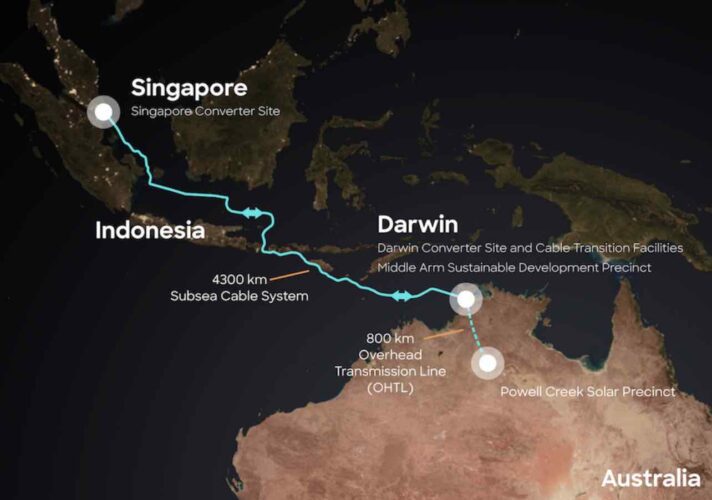
“The second stage of the project called Singapore Link is then focused on the much longer subsea cable, the 4,300 Kkm cable that will run through Indonesian waters to the offtake facility in Singapore they need to connect into the Singaporean grid.
“And so it’s a massive project. I think what the reason that we were attracted to it and why we see this as a really interesting, exciting project to be involved in is the ability to not just send power to Singapore, but also to use it domestically to do exactly this thematic investing that I’ve been talking about in this presentation.
“We want to see some of these industries springing up in Darwin.”
Allan also flagged that Quinbrook itself – which is looking at an $8 billion polysilicon production project to help Australia grab a bigger share of the solar supply chain – would likely be a customer for its own planned projects “and hopefully do something useful with it and export it to Asian markets and elsewhere.”
Allan said Sun Cable would be able to support multiple projects of that nature and help Darwin achieve its goal of creating $40 billion green economy.
“Australia is blessed to have … all the ingredients that are needed to make this happen,” Allen said. “We have to renewables, we have the minerals, we have the ports, we just need to push and assume our place in these growing and new markets that are springing up.
“But time is of the essence. There are a number of other countries that have exactly the same idea and whilst these ports are scarce, they’re not completely unique.
“And so many other countries are trying to fold in under the wing of US policy support, to get special status to be able to contribute to push their ports push their renewable industries as hard as they possibly can. And we need to be in the mix right now.”



